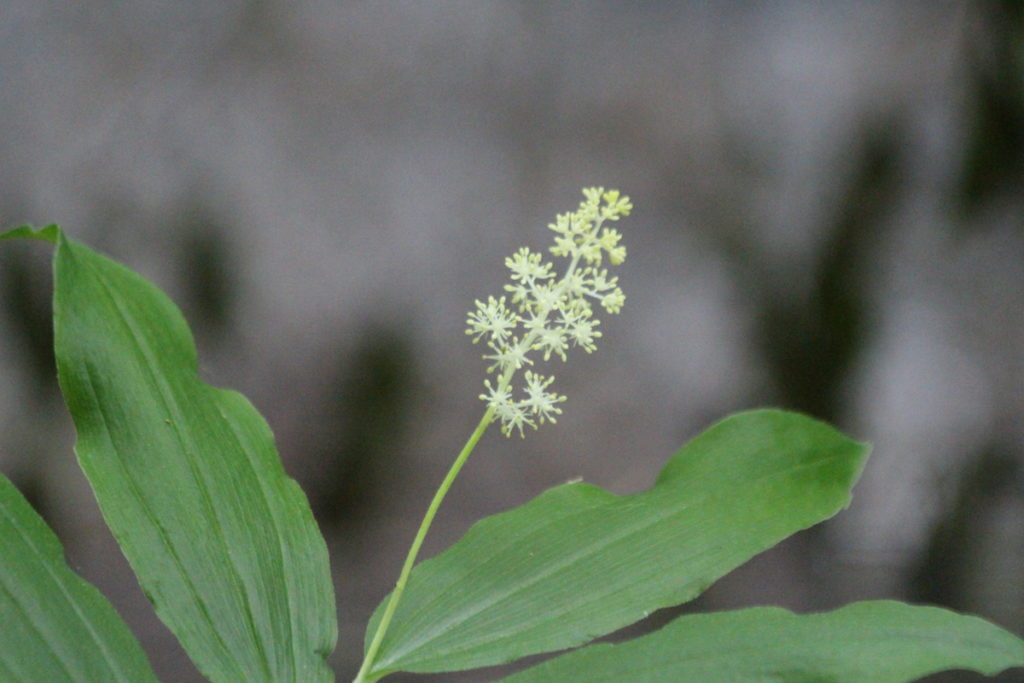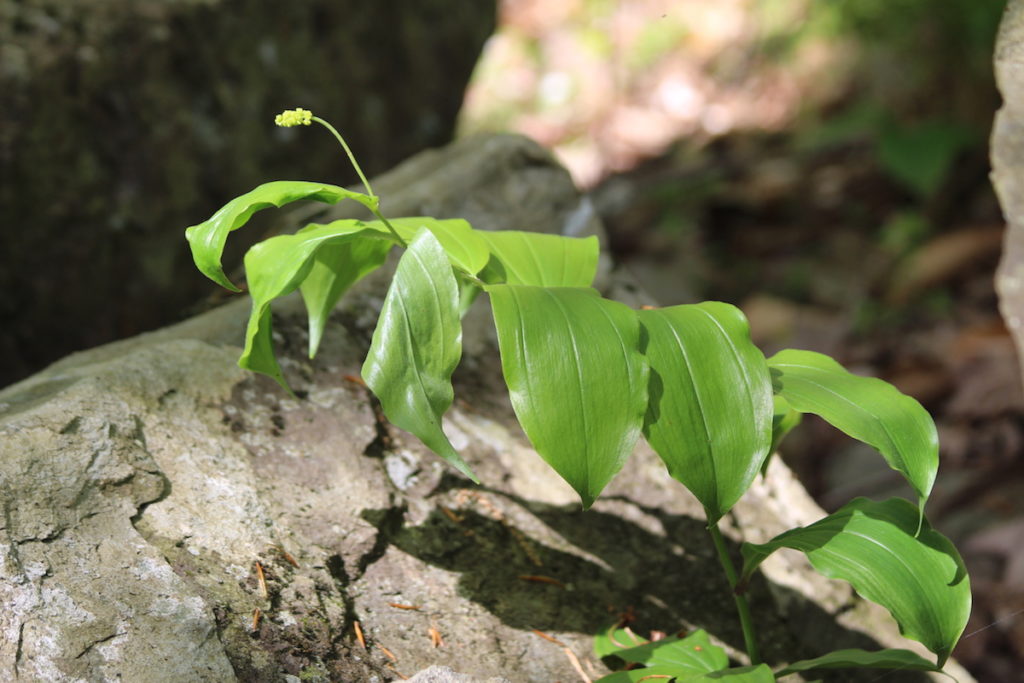
What’s in Bloom | Solomon’s-plume
June 1, 2021
- Eastern Solomon’s-plume (Maianthemum racemosum) is a perennial herb native to the continental United States and much of Canada.
- Spreads via thick rhizomes, from which grow un-branching stems in the spring which die back before winter.
- Though often mistaken for Solomon’s-seal, it produces a distinctive plume of flowers, very different from the hanging flower clusters made by its lookalike.
Eastern Solomon’s-plume (Maianthemum racemosum), also known as False Solomon’s-seal, is a perennial herb native to the continental United States and much of Canada. It occurs primarily in moist, rich, forested areas. Spreading via thick, persistent rhizomes, this 1-3 foot tall plant often forms large clumps or colonies. After dying down to the ground each fall, stems re-emerge from the rhizomes in spring. They are unbranched and arch down rather than growing erect. The stems are slightly hairy and form a subtle zigzag between the alternate leaves. Leaves are ovate with pointed tips, and grow up to 6 inches long and 3 inches across. They can be wavy along their edges and are hairy underneath, with conspicuous parallel veins running down the length of each leaf.
In late spring-early summer, small flowers emerge, each around ⅛ inch across, with 3 white-pale yellow petals and 3 petal-like sepals. The flowers of Eastern Solomon’s Plume form in beautiful plume-like racemes1. of anywhere from 20-80 tiny, fragrant flowers at the end of the stem. The clusters grow between 3-5 inches long and 2 inches wide. After being pollinated by small bees, flies, and beetles, the fruits form as a cluster of waxy berries of similar size as the flowers. Though they often start out a mottled greenish color, they ripen into translucent ruby red berries with a few seeds each. The berries are eaten by birds and rodents, helping to spread the seed.
Eastern Solomon’s-plume is a good choice for shaded borders or woodland gardens, as it prefers partially shaded, well-drained soils. It combines well with other shade-loving plants, and adds the beauty and contrast of its arched stems. It grows well in the same conditions as red columbine, wild ginger, and woodland phlox, among others. It does best if planted in clumps of 6 or more stems, but will eventually create more stems if planted singly. It can be propagated by dividing clumps in spring or fall. However, it is sensitive to root disturbance, and transplanting mature plants can affect flowering for as long as 2 years.
1-Racemes: a flower cluster with the separate flowers attached by short equal stalks at equal distances along a central stem. (Oxford)
Sources: https://www.wildflower.org/plants/result.php?id_plant=MARA7 ; https://www.minnesotawildflowers.info/flower/false-solomons-seal ; https://plants.sc.egov.usda.gov/home/plantProfile?symbol=MARA7 ; https://www.missouribotanicalgarden.org/PlantFinder/PlantFinderDetails.aspx?taxonid=282418&isprofile=1&basic=Maianthemum%20racemosum


